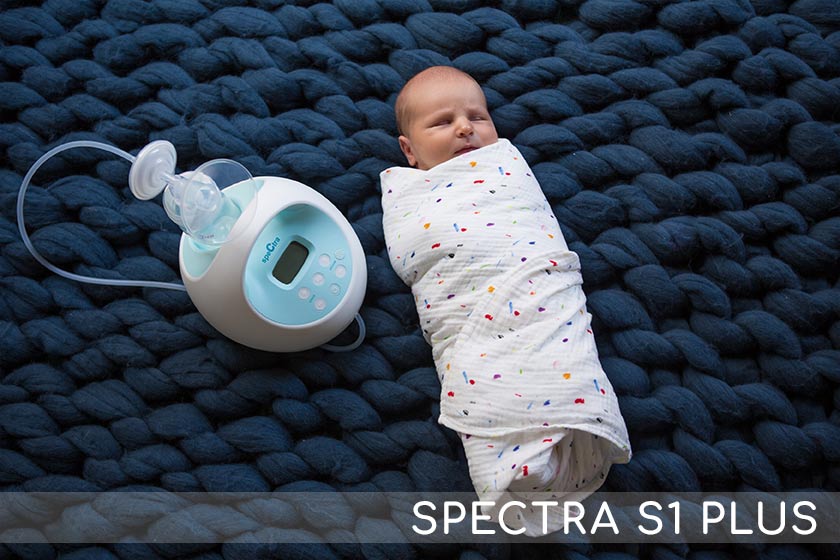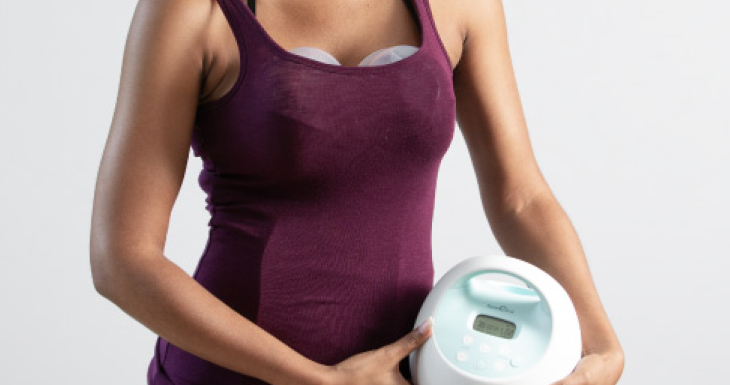Is My Baby Getting Enough Milk?

“Is my baby getting enough?” This question is one of the most common among nursing moms. Whether you’re a first-time mom or this is familiar territory for you—no breastfeeding journey is identical, and questions will likely arise. Breast milk digests quickly and easily. At times you may notice your baby demanding back-to-back feedings, so much so that you’ll probably even start questioning if you’re producing enough milk to keep your baby healthy and satisfied. As stressful as this may seem, know that this is a common concern, and there are several ways to check whether your baby is getting enough liquid gold.
Hello Breastmilk
Drops of clear or yellowish colostrum are the baby’s first milk and are the perfect nourishment for your newborn’s first few days of life. By day four, you should notice milk increasing in volume. Every mother is unique. This time frame could vary based on previous breastfeeding journeys, labor duration, and even if you had a c-section or vaginal delivery. Your breasts will likely feel engorged, and you may leak in between feedings. If you notice little to no sign of milk coming in, you should contact your doctor or lactation consultant to discuss the reasons why your milk supply might be delayed.
Momma the Diaper Slayer
You may find yourself going through diapers more than your wallet would like to admit. Luckily, this is a strong sign of a well-fed baby! Expect to go through 6-10 diapers a day. Several of those should be yellow or mustard-colored poop. While diapers with only pee are a sure sign that your baby’s staying hydrated, make sure to be on the lookout for those poopy diapers, ensuring your baby is getting what they need. At least 3-4 stools per day, the size of a quarter or more.
Gulp-up, Buttercup!
Try to listen to swallowing sounds. You’ll notice your baby’s jaw movements, and once milk letdown kicks in, you should hear swallowing or gulp-like sounds. If it seems as though your baby is dozing off on your breast, try to fit in some breast compressions, a gentle massage used to help express milk.
Fill up that onesie!
It’s entirely normal for your baby to lose 5-7% of their weight within a week of birth. After the first seven days, your baby should be gaining an average of 7-10 ounces per week for the first three months. That amount will slightly decrease somewhere in between 3-6 months. If your baby is not nursing well, pump with your spectra between feedings to provide expressed breastmilk and create a healthy milk supply. Bottom line, stay on track with your wellness visits and check-ups to ensure your little one’s chart is where it’s supposed to be.
Off to Dreamland
You may notice your baby naturally falling asleep or letting go of the breast within 10 to 30 minutes of each nursing session. This is another strong sign of a full belly. On the other hand, a baby who looks distressed during feedings and sleeps all the time may not be getting enough milk. Starting every feeding skin to skin can help wake up a sleepy baby and encourage nursing. Also, try every feeding undressed from the waist up and baby only in a diaper.
Work on establishing your milk supply by staying close to your baby and allowing for unlimited access to the breast. The best time to introduce pumping is about 3-4 weeks after delivery. However, many mothers find that pumping is a great way to fit in breaks when needed (hello, date night)! Additionally, moms who are returning to work might want to get on a schedule and build a small milk stash for the transition.
On average, a baby from 1-6 months old will intake an average of 25-30 ounces per day. Moms pumping for a missed feed at this stage will see 2-4 ounces combined. If pumping is in addition to nursing at the breast, you’ll notice about half of that. Pumping is never a good indicator of your milk supply; it simply tells us how much milk you can pump. You are doing the best you can, mamas, and that’s enough!
Spectra makes all of this possible. Read our top tips HERE on best practices for pumping and storing!




